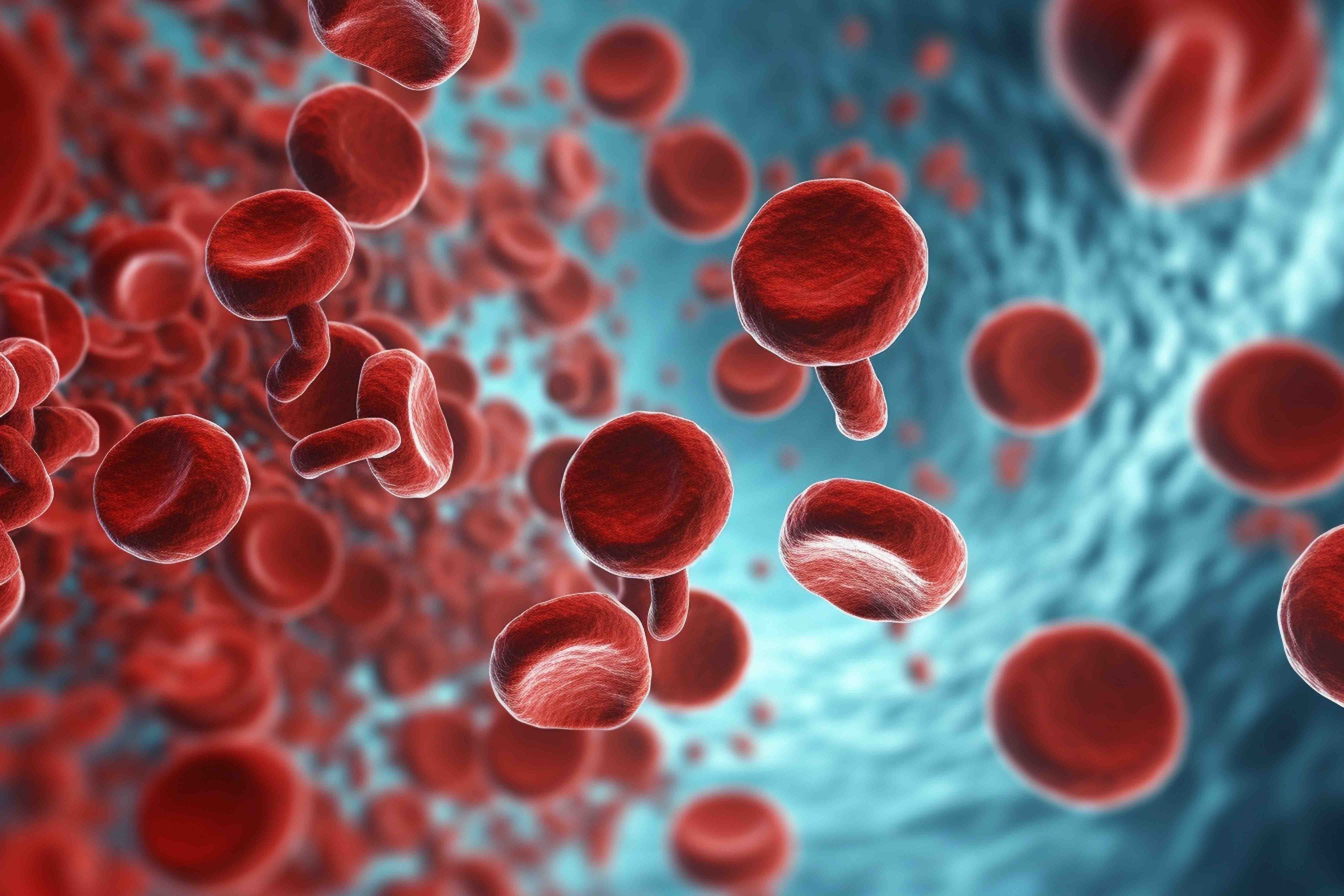- Center on Health Equity & Access
- Clinical
- Health Care Cost
- Health Care Delivery
- Insurance
- Policy
- Technology
- Value-Based Care
ESAs Do Not Improve Hb Levels in Lower-Risk Myelodysplastic Syndrome
Data from a retrospective study spotlight a need for more effective first-line and second-line clinical management strategies to improve outcomes in patients with lower-risk myelodysplastic syndrome.
This article was originally published by CancerNetwork®.
Most patients with lower-risk myelodysplastic syndrome (MDS) who received erythropoiesis-stimulating agents (ESAs) or other first-line therapy options did not experience meaningful improvements in hemoglobin (Hb) levels, according to findings from a retrospective observational cohort study.
Blood cells flowing | Image credit: Катерина Євтехова - stock.adobe.com

Investigators reported that 41% of patients had a Hb increase of at least 1.5 g/dL in during first-line treatment. Of these patients, 44% of those receiving ESAs (n = 143) and 32% of those treated with other first-line therapies (n = 31) experienced a Hb increase of 1.5 g/dL or more. Among patients receiving ESAs and those receiving other treatments in the first line, respectively, the median time to first response was 1.9 months (range, 0.03-63.0) and 1.8 months (range, 0.03-21.0), and the median duration of response (DOR) was 9.7 months (range, 0.03-107.0) and 5.2 months (range, 0.3-81.0).
Among patients receiving ESAs in the first line, the median duration of Hb increase was 12.1 months (range, 0.3-45.0) for those with a serum erythropoietin (EPO) level no higher than 200 U/L (n = 27) and 2.6 months (range, 0.03-13.0) for those with an EPO level higher than 200 U/L (n = 6). For those who received other types of first-line treatment and had a baseline EPO level of 200 U/L or lower (n = 4), the median duration of Hb increase was 2.5 months (range, 1.0-50.0).
Among all patients in the study, 10% experienced disease progression to higher-risk MDS or acute myeloid leukemia (AML). Additionally, 9% of those who received ESAs and 10% of those treated with other types of therapy in the first-line setting experienced disease progression. Investigators also reported that 8% of the overall population, 8% of those receiving ESAs in the first line, and 8% of those treated with other kinds of first-line therapy developed a second hematologic malignancy.
Investigators of this retrospective study assessed the characteristics, first-line treatment patterns, and clinical outcomes of 421 patients with lower-risk MDS treated in the United States (n = 351) and the European Union (n = 70) after 2014. Data were extracted from COTA Vantage for patients in the US and from BC Platforms for those in the EU.
Investigators used descriptive statistics to evaluate patient characteristics, treatment patterns, time to and duration of first Hb increase of 1.5 g/dL or more, secondary hematologic malignancy rates, and disease progression to higher-risk MDS. Patients were placed into subgroups based on whether they received ESAs in the first-line setting or any other non-ESA systemic therapy.
Patients 18 years and older with Revised International Prognostic Scoring System very low-, low, or intermediate-risk MDS and less than 5% blasts in bone marrow were eligible for inclusion on the study. Having an ECOG performance status of 0 to 2 was another requirement for inclusion.
Overall, the median patient age was 75.0 years (range, 37.0-93.0). Additionally, most patients were White (85%), had a body mass index 25 kg/m2 or higher but lower than 30 kg/m2 (27%), and an ECOG performance status of 0 (41%).
Across the overall population, 77% (n = 324/421) received ESAs in the first line, and 23% (n = 97/421) were treated with other first-line therapies. The mean Hb level prior to treatment was 9.0 (standard deviation [SD], 1.1) g/dL in the ESA group and 9.9 (SD, 2.0) g/dL in the other first-line treatment group. In each respective group, the median time from MDS diagnosis to first-line therapy was 1.8 months (range, 0.03-193.0) and 1.6 months (range, 0.03-71.0).
Overall, 81% and 57% of patients in the United States and European Union cohorts, respectively, were treated with an ESA in the first line. The most commonly used first-line ESA was darbepoetin alfa (Aranesp) monotherapy in the overall population (44.0%), the United States cohort (43.0%), and the European Union cohort (48.0%). Patients receiving other types of first-line treatment mostly received single-agent azacitidine in the overall population (60.0%), the United States cohort (71.0%), and the European Union group (37.0%).
Investigators reported that 57.0% (n = 183/324) and 38.0% (n = 36/97) of patients receiving ESAs in the first line and other types of therapy, respectively, received subsequent treatment in the second-line setting. Patients who received ESAs in the first line mostly received second-line treatment with darbepoetin alfa (25.0%) and azacitidine in combination with ESAs (22.0%). Additionally, patients who received treatment outside of ESAs in the first line were treated with second-line platelets plus red blood cells (17.0%) and darbepoetin alfa (14.0%).
These data were presented in a poster at the 2023 Society of Hematologic Oncology (SOHO) Annual Meeting.
Reference
Symeonidis A, Yucel A, Deshpande GA, et al. First-line treatment patterns and outcomes among patients with newly diagnosed myelodysplastic syndromes: a global, retrospective observational cohort study. Presented at: 2023 Society of Hematologic Oncology (SOHO). Annual Meeting; September 6-9, 2023; Houston, TX. Abstract MDS-067.
Real-World Data Support Luspatercept vs ESAs for Anemia in Lower-Risk MDS
June 5th 2025Patients with myelodysplastic syndrome (MDS) who received luspatercept showed greater hemoglobin gains and transfusion independence compared with erythropoiesis-stimulating agents (ESAs) in a real-world analysis.
Read More
